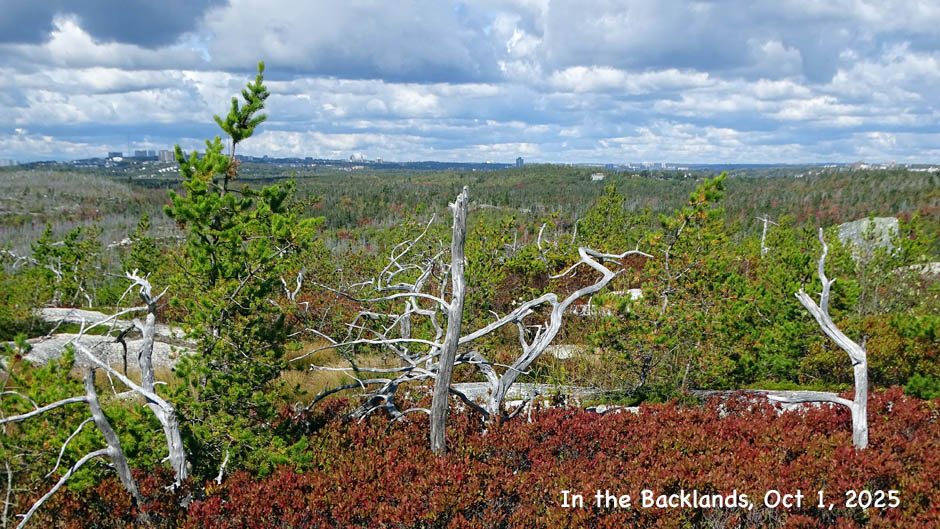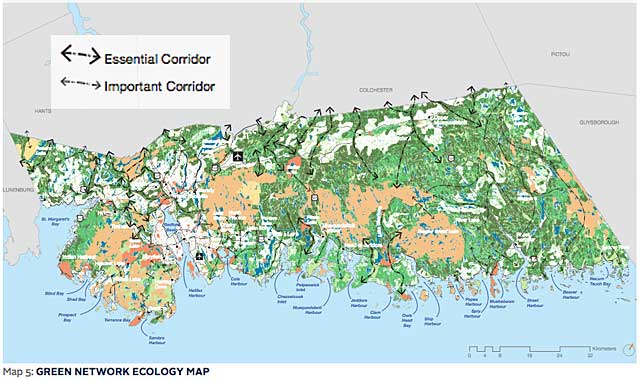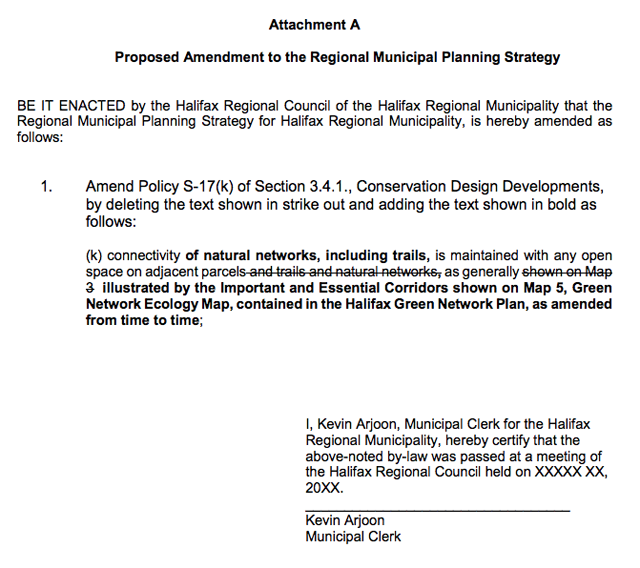UPDATE Wed Sep 25, 2019: The Amendment “to the Regional Plan’s conservation design development agreement policies to specifically reference the Important and Essential Corridors shown on Map 5)” received unanimous approval at yesterdays meeting of Halifax Regional Council!!!!
—————–
Halifax (HRM) is blessed with phenomenal natural assets. In June of 2018, Regional Council tabled the Final Draft of the The Halifax Green Network Plan which “provides land management and community design direction to:
– maintain ecologically and culturally important land and aquatic systems;
– promote the sustainable use of natural resources and economically important open spaces; and
– identify, define and plan land suited for parks and corridors”
The Essential and Important Corridors shown in Map 5 above allow movement genetic exchange of plants and animals, large and small, between otherwise isolated patches of natural habitat within HRM and across the boundaries of HRM. Without those corridors, biodiversity and ecosystems services provided by our natural spaces will inevitably decline – such habitat fragmentation and isolation is a major driver of the massive species losses currently in progress globally and locally.
Legislative followup to the HGNP is required to actually protect those corridors and is urgent as some development has already occurred or been approved within those corridors,
“Consequently, to avoid potential conflicts in the near term, staff recommend a narrowly focused amendment to the Regional Plan’s conservation design development agreement policies to specifically reference the Important and Essential Corridors shown on Map 5, Green Network Ecology Map, contained in the HGNP. This will provide a clearer, more up-to-date basis for municipal staff and developers to consider such corridors as part of the conservation design development agreement process.”
HRM is only considering this change – it hasn’t happened yet. We need your help to ensure that they amend the Regional Plan to require all conservation design (rural residential development) to plan based on the ecological findings of the Green Network Plan.
What you can do: attend the hearing or write in advance (by 3 pm Monday, Sep 23 see below for venues) to support the amendment, asking HRM to not allow development to compromise connectivity or the ecological network in any way.
Even a few words to your Councillor and Mayor Savage will help: e.g., to say you are strongly in support of an amendment to the Regional Plan’s conservation design development agreement policies to specifically reference the Important and Essential Corridors shown on Map 5 .
——–
More details from HRM (highlighting is mine):
| NOTICE OF PUBLIC HEARING HALIFAX REGIONAL COUNCIL
Regional Council intends to consider and, if deemed advisable, approve the following:
The public hearing will be held on Tuesday, September 24, 2019 at 6:00 p.m. at Halifax City Hall (Council Chamber), 1841 Argyle Street, Halifax, NS. All oral and written submissions will be considered at that time. Written submissions may be forwarded to the Municipal Clerk by mail, P.O. Box 1749, Halifax, Nova Scotia, B3J 3A5; by fax, 902-490-4208; or by e-mail, clerks@halifax.ca. Written submissions should be received by the Municipal Clerk’s office as early as possible and not later than 3:00 p.m. on September 24, 2019. For any written submissions exceeding three standard letter sized pages in length, thirty (30) copies must be supplied to the Municipal Clerk’s office. A copy of the staff reports may be obtained by contacting the Office of the Municipal Clerk at 902-490-4210. Alternatively, the staff report is available on-line at the following location: www.halifax.ca/sites/default/files/documents/city-hall/regional-council/190813rc1512.pdf Further details regarding the proposal can be found at the following location: www.halifax.ca/about-halifax/regional-community-planning/community-plans/halifax-green-network-plan (Scroll down to “Short Term Regional Plan Amendment Process”) ACC # C320-6912 |
Some extracts from Item No. 15.1.2 Halifax Regional Council August 13, 2019 (bolding is mine):


